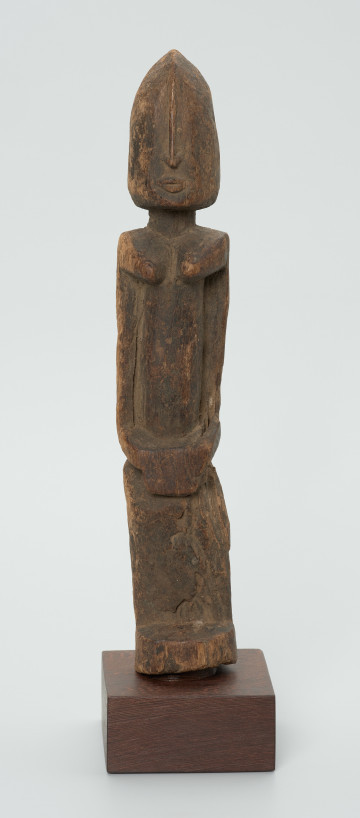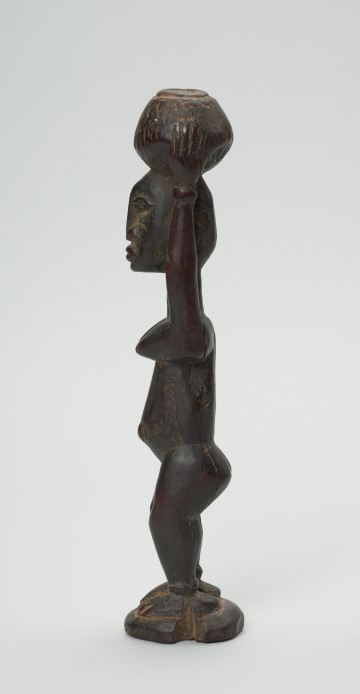
Figure - woman
między 1951 — 2000
National Museum in Szczecin
Part of the collection: Collection of Dogonian art
The history of Dogon art is a relatively young field, researched mainly by American and European scholars. The sources for its reconstruction are provided by the oral tradition of the Dogon, archaeological research and art objects collected for nearly 100 years by museums and private individuals. The short history of collecting makes it difficult to reconstruct the history of the transformations taking place in their art, while field research, both archaeological and ethnological, provides interesting material. The dry climate of the Bandiagara Escarpment and the difficult access to it have created favourable conditions for the preservation of the wooden sculptures discovered in the caves and dated to different periods. At the same time, comparative research is being carried out with the work of other West African peoples with whom the Dogon may have had contact before settling in the Bandiagara Escarpment area. According to oral tradition, the Dogon came from an area known as Mande country, which according to researchers was situated in the centre of the Mali Empire, founded in the 13th century and encompassing areas within the present-day south-western Republic of Mali and the north-eastern Republic of Guinea. However, the origin of the Dogon from the thus outlined Mande country is sometimes questioned due to the Dogo-so language, which is included in the Voltaic language group, while the inhabitants of the Mande country speak languages from the Mande group. Not all Dogon migrated from their ancestral homeland directly to the Bandiagara Escarpment. Some settled first in the Jatenga state, near today's Burkina Faso. It explains some of the similarities between the Dogon and Mossi masks - the inhabitants of Yatenga. The Dogon were driven out of their settlements by the Mossi around 1480 and found refuge from their attacks on the Bandiagara Escarpment.
Ewa Prądzyńska
Author / creator
Dimensions
cały obiekt: height: 42 cm, width: 9 cm
Object type
figure
Creation time / dating
Creation / finding place
Identification number
Location / status

między 1951 — 2000
National Museum in Szczecin

między 1951 — 2000
National Museum in Szczecin

między 1951 — 2000
National Museum in Szczecin
DISCOVER this TOPIC
National Museum in Lublin
DISCOVER this PATH
Educational path